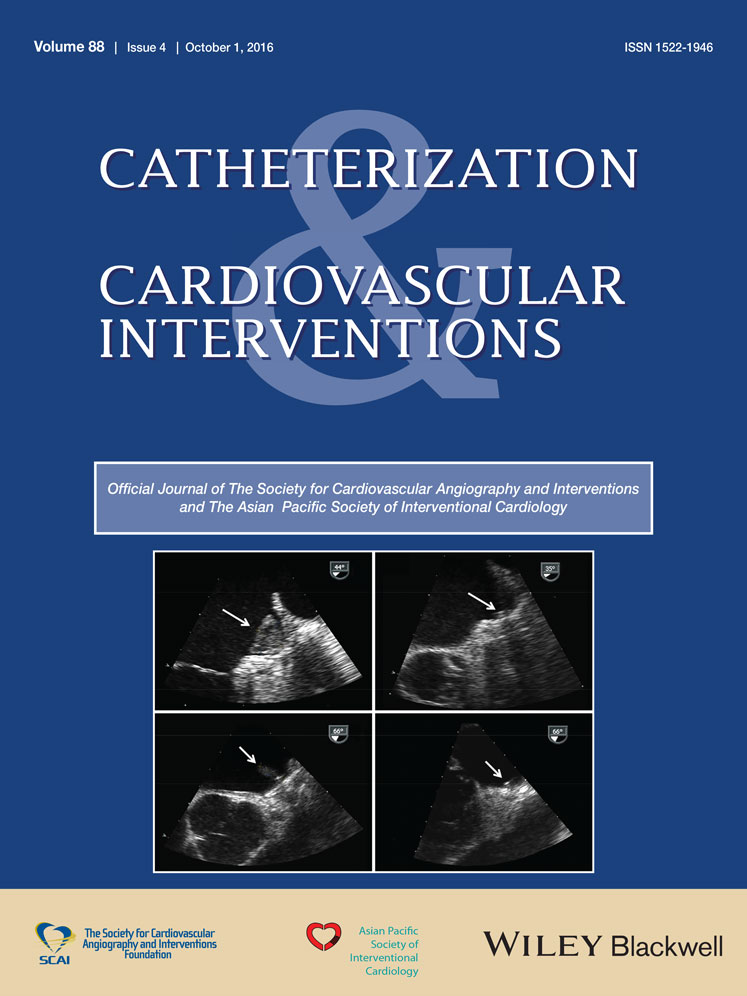Dual-Source Computed Tomography for Chronic Total Occlusion of Coronary Arteries
Conflict of interest: Nothing to report.
Abstract
Objectives
We compared dual-source CT (DSCT) and conventional angiography (CA) in evaluation of chronic total occlusion (CTO) of coronary arteries.
Background
Percutaneous coronary intervention (PCI) in CTO is technically difficult and has comparatively lower success rate than intervention in non-occluded artery. Accurate assessment of lesion morphology is an important determinant of PCI success in CTO.
Methods
Nineteen symptomatic patients (18 men, age: 58.6 ± 10.6 years) with a CTO on CA were subjected to a DSCT (Definition, Siemens, Germany). Heart rate (HR) control was not performed. Dedicated post-processing software was used for lesion analysis on both modalities. Presence of bridging collaterals, stump morphology, calcification, side branch, proximal tortuosity, occlusion length, distal vessel interpretability, and distal lesions were statistically compared.
Results
There were 20 CTOs. HR during DSCT ranged from 53 to 131 bpm. Bridging collaterals were seen in 3/20 (15%) lesions on CA and in none on DSCT. Stump anatomy and side branch were identified equally well. Plaque calcification was identified in 5/20 (25%) lesions on CA and in 12/20 (60%) lesions on DSCT (P = 0.025). Nature and extent of calcification were better visualized on DSCT. No proximal tortuosity was noted. Distal vessel was better interpretable on DSCT (15/20; 75%) compared to CA (9/20; 45%) (P = 0.05). No significant difference in lesion length was noted.
Conclusion
DSCT performs as well as CA for most features of CTO. Avoidance of need to control HR, ability to better detect and characterize calcium and to interpret distal vessels make it a useful pre-intervention investigation. © 2014 Wiley Periodicals, Inc.




